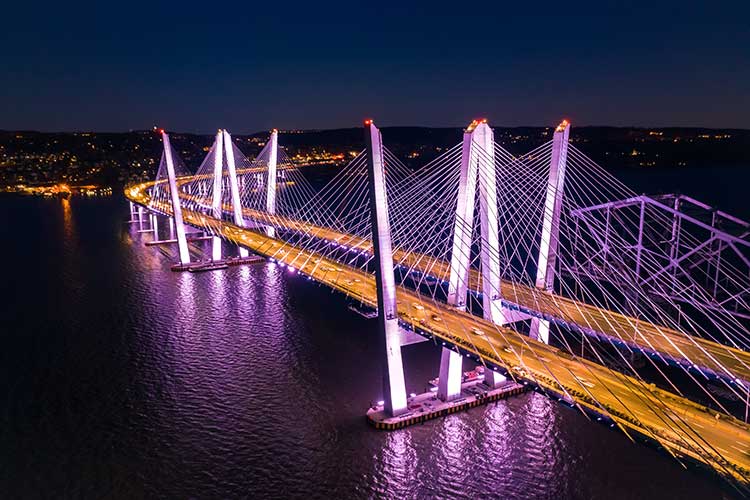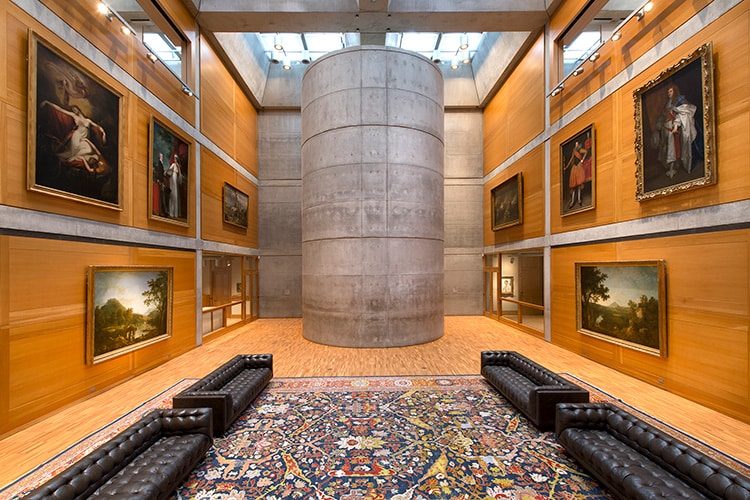The recently re-built Tappan Zee Bridge is a 3.1-mile-long twin-span bridge connecting Rockland and Westchester counties across the Hudson River in New York. Also called “The New NY Bridge” and officially named the “Governor Mario M. Cuomo Bridge,” the nearly $4 billion project was completed in August 2017, with the demolition and removal of its predecessor—initially completed in 1955—finished in early 2019.
The bridge boasts a number of technical achievements and was designed to last a century before requiring any significant maintenance. Ensuring such longevity is a lofty goal for any project, especially one in which the bridge’s foundation is anchored in a river.
This all raises a basic question: How do you build a bridge underwater? The new Tappan Zee Bridge construction serves as an example.
While technological advances in commercial diving in recent years has considerably expanded the scope of what can be accomplished below the surface, the best approach to underwater bridge construction is still to construct it on land.
The materials used for underwater construction are unique. To this end, most major construction projects in rivers, lakes or oceans rely on cofferdams—giant corrugated sheets of metal that interlock together into whatever shape you need. “Then you drive it [the cofferdam] down and it becomes like a dam, and you pump out the water in the middle,” said Kyle Elkins, a commercial diver and founder of Pacific Coast Marine and Diving LLC.
The result, said Elkins, a diver who is familiar with the process of building bridges like the Tappan Zee, is a dry working space on the bottom of a river or lakebed or seafloor.
Once the area is dry, construction can proceed as it normally would above ground—with a few restrictions.
For one, trucks can’t always drive in and out of the site, since it’s in the middle of a river. New challenges can offer new innovations, however. In the case of the Tappan Zee Bridge project, the contractors used two floating batch plants to deliver on-demand supply of concrete for the bridge.
Described as “mobile operation centers” by the New NY Bridge Project, these 60 feet by 200 feet barges supplied 300,000 cubic yards of concrete during the course of construction, thus removing 30,000 concrete trucks from local roads over the span of five years.
One of the main uses for all that concrete was in the bridge’s foundation. The new Tappan Zee Bridge rests on approximately 1,000 individual steel pilings driven deep through the riverbed and into the bedrock below.
Once the pilings are in position, they’re filled with steel-reinforced concrete. Due to the variable soil composition beneath the Hudson—a relic from the end of the last Ice Age, when more than 300 feet of sediment pooled in the valley as a result of glacier melt—the pilings vary in size and length, with the largest reaching a diameter of 72 inches and 440 feet in length.
Built to last
Each piling in the final product is customized to its precise position in the bridge. The west side of the river presented an especially unique challenge to the project. Here, the bedrock is covered in an enormous layer of silt and clay too deep to penetrate with even the longest pilings. Instead, the engineers opted for a different type of piling with more surface area than the standard cylinder shape.
The increased surface area resulted in a greater contact patch with the soft soil and an increase in hydrostatic forces that enabled the piling to remain fixed in place even without bedrock.
Once the pilings were in place, the construction team then lowered the bridge’s steel backbone—called the “pile caps”—into place. The role of the pile cap is to unite the pilings mechanically, combing the strength of each individual unit into a single solid foundation.
The pile caps are also responsible for supporting the bridge’s eight massive towers, which now stand 400 feet tall and hold the 192 steel cables that buttress the bridge’s main span.
Only time will tell whether the new Tappan Zee Bridge meets its goal of lasting 100 years before requiring significant maintenance. But the project demonstrates both the complexity and ingenuity necessary for building at the bottom of a large body of water.















